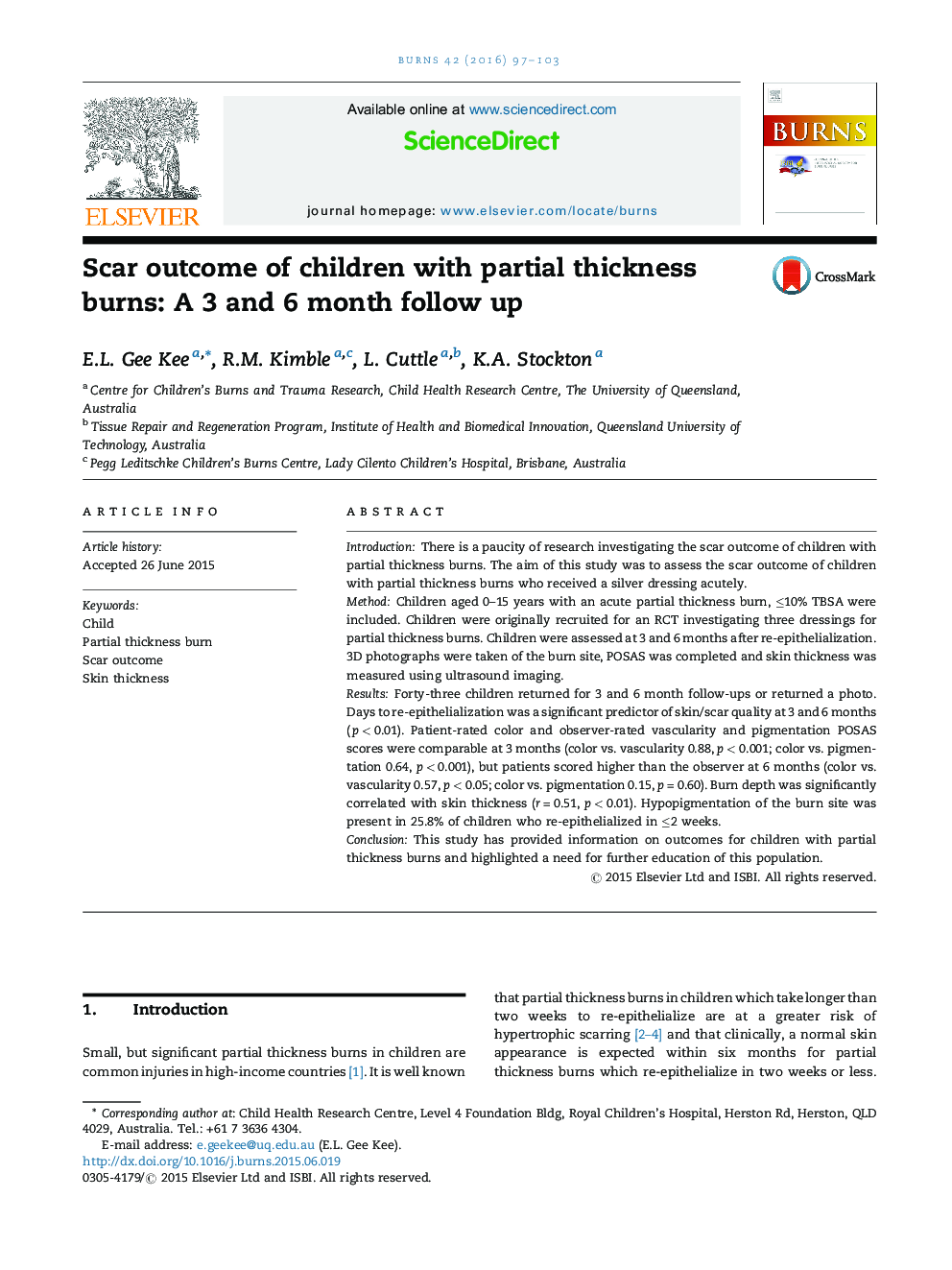| Article ID | Journal | Published Year | Pages | File Type |
|---|---|---|---|---|
| 3104177 | Burns | 2016 | 7 Pages |
•Days to re-epithelialization was a predictor of scar quality at 3 and 6 months.•Patient and observer-rated POSAS color scores had a low correlation at 6 months.•Burn depth was significantly correlated with ultrasound measured skin thickness.•Burn site hypopigmentation in 25.8% of children who re-epithelialized in ≤2 weeks.
IntroductionThere is a paucity of research investigating the scar outcome of children with partial thickness burns. The aim of this study was to assess the scar outcome of children with partial thickness burns who received a silver dressing acutely.MethodChildren aged 0–15 years with an acute partial thickness burn, ≤10% TBSA were included. Children were originally recruited for an RCT investigating three dressings for partial thickness burns. Children were assessed at 3 and 6 months after re-epithelialization. 3D photographs were taken of the burn site, POSAS was completed and skin thickness was measured using ultrasound imaging.ResultsForty-three children returned for 3 and 6 month follow-ups or returned a photo. Days to re-epithelialization was a significant predictor of skin/scar quality at 3 and 6 months (p < 0.01). Patient-rated color and observer-rated vascularity and pigmentation POSAS scores were comparable at 3 months (color vs. vascularity 0.88, p < 0.001; color vs. pigmentation 0.64, p < 0.001), but patients scored higher than the observer at 6 months (color vs. vascularity 0.57, p < 0.05; color vs. pigmentation 0.15, p = 0.60). Burn depth was significantly correlated with skin thickness (r = 0.51, p < 0.01). Hypopigmentation of the burn site was present in 25.8% of children who re-epithelialized in ≤2 weeks.ConclusionThis study has provided information on outcomes for children with partial thickness burns and highlighted a need for further education of this population.
